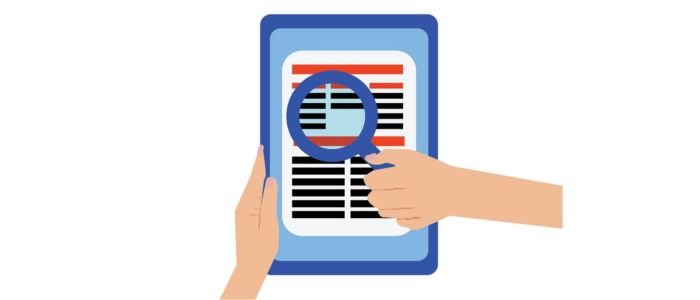Why Display Advertising Matters in Addiction Treatment Marketing?
In the addiction treatment industry, connecting with patients at the right time can change a life. Display advertising is the most effective way to make this connection. Display ads appear on different social platforms, apps, and websites, reaching people wherever they are online. These ads have various forms, including animated or static, native ads or banner ads that fuse smoothly with on-page content, retargeting campaigns that re-engage with patients who previously visited your website. The online display advertising marketing continues to grow rapidly, projected to reach almost $418 billion by 2030 from $212 billion in 2025, a sign of just how important this channel has become for treatment centers worldwide.
For addiction treatment facilities, display advertising is a tool for reminding patients and families that help is available, establishing trust, and building awareness. Display ads allow treatment facilities to stay visible during the initial stages of consideration, guiding patients gently towards taking the next step. By including clear CTAs, these ads motivate instant contact. Many treatment centers combine pay-per-call programs with display campaigns, ensuring that a prospect is ready to talk, and they are connected with a professional admissions specialist instantly.
3 Types of Display Ads & Their Uses in Addiction Treatment Marketing
Display advertising comes in various formats, and each one has its own benefits and best practices. Choosing the right mix for your addiction treatment centers can improve lead generation and engagement.
Native Ads
Native ads are crafted to blend into the surrounding app content or website, making them feel more valuable information and less like ads. This format is best for infographics, blog posts, and educational articles that guide readers via treatment options. Since they feel organic, native ads achieve higher engagement and can move prospects gently towards taking action.
Rich Media & Video Ads
These work well on social media platforms and mobile, where video consumption is high. Interactive or video ads tell a story. Addiction treatment centers can use them for:
- Expert Messages: Short clips from counselors or medical professionals can position your recovery center as a trusted authority.
- Patient Testimonials: Sharing recovery stories builds emotional connection and credibility.
- Virtual Facility Tours: Giving families a first look at your treatment facility helps reduce fear of the unknown.
Static Banner Ads
Static banners are a widely recognized form of display advertising. These ads have a concise text and a single image, making them perfect for building awareness. Best practices include:
- Brand Consistency: Ensure tone, colors, and logos align with the treatment facility’s identity to build familiarity.
- Strong Visuals: Incorporate calming, warm colors and imagery to evoke hope and trust.
- Clear CTAs: Use action-oriented phrases.
8 Strategic Roles of Display Advertising in Addiction Treatment Marketing

Display advertising plays an important role in addiction treatment marketing, giving treatment facilities a solid way to become visible, connect with the right patients, and nurture them towards getting help. It is all about using strategic placements, data, and messaging to reach patients when they need help. Below are the ways display advertising supports patient acquisition and treatment center growth.
1. Brand Exposure & Awareness
For patients and families, the first step is finding treatment online. Display ads help treatment facilities establish a consistent presence across social platforms, apps, and websites. This visibility keeps your recovery center in front of people who are starting to research options, and makes it more recognizable. Display ads allow treatment facilities to present a trustworthy and compassionate image. The result is a strong brand identity that motivates patients to take the next step.
2. Reaching the Right Audience with Targeting
Display advertising is effective when it reaches the audience who needs help. Targeting ensures that your ads are displayed to the audience that is ready to engage, local, and relevant.
– Demographic Targeting
Treatment facilities can be targeted by parental status, gender, and age. This is helpful when reaching adult children, spouses, parents, or loved ones, who might be looking for help for someone they know.
– Geotargeting
For local treatment centers, geotargeting is important. Ads can be displayed only to users within a certain radius of your treatment center, state, or specific city.
– Behavioral Targeting
It allows you to serve ads to people who have already read articles about substance recovery and use, visited relevant websites, and searched for addiction-related terms. This ensures that your ads are reaching users looking for solutions. For treatment facilities looking to connect with these high-intent patients, high-quality substance abuse addiction inbound call leads ensure that your staff speaks directly with people who want to recover. This further ensures that your ads are reaching patients looking for solutions.
Pro Tip: Pay-per-call campaigns can be added on top of display ads for hyper-targeted results. For example, you can run click-to-call display banners in selected cities, ensuring that when a patient is ready, they can connect with your admissions staff instantly.
3. Target Audience Reach
Display advertising provides precision. You can create audience segments based on past interactions with your website, interests, and behaviors. This means the marketing budget is spent on reaching people who have more chances of converting into leads. Such reach is important for addiction treatment marketing, where each click and impression should bring you closer to connecting with the right people. It allows you to customize messages for various segments, like one for adults seeking inpatient rehab and another for a campaign for parents looking for adolescent treatment.
4. Lead Generation & Website Traffic
One of the main goals of display advertising is to bring traffic to the website, where visitors can learn about taking the next step, verify insurance, and learn about the programs. Combining this with pay-per-call campaigns solidifies this approach by enabling patients to bypass the website and speak with a live admissions specialist. This is valuable for mobile users, where calling feels easier and faster than filling out a form. Effective ad creatives must include:
- Optimized Landing Pages: Ensure that your ads lead to pages with relevant information and simple ways to convert.
- Clear CTAs: Motivate visitors to verify insurance, chat with a counselor, or call now.
- Compelling Headlines: Offer a solution instead of services.
5. Strategic Placement

The success of display advertising relies on where the ads are placed. Strategic placements guarantee that your ads are shown on apps or websites your target audience trusts. Being strategic with placements, you can focus on people who are looking for information and avoid wasting impressions on irrelevant audiences.
- Premium Inventory: Collaborating with reputable networks allows you to get premium placements on high-traffic websites. This enhances credibility and improves visibility.
- Contextual Placement: Your ads can show up on pages related to wellness, health, recovery, and addiction. This increases the likelihood of engagement and ensures relevance.
6. Campaign Diversification
A diversified approach allows you to meet patients wherever they are in their decision-making stage. Someone researching may engage with a native ad, or someone closer to making a decision could respond to a bold banner with a clear click-to-call CTA. Display advertising provides the benefit of diversifying campaigns by using:
- Native ads for educational content that mix naturally with the page.
- Video ads for emotional impact and storytelling.
- Static banners for broad awareness.
7. Performance & Data Tracking
The biggest benefit of digital display advertising is the ability to track results. Using this data enables treatment facilities to adjust budgets, placements, and creatives. Call tracking tools are useful here, you can see which ad generates the most calls, whether they result in admissions, and how long those calls lasted. You can measure:
- CPL (Cost-Per-Lead): Understand the actual ROI of your campaigns.
- Conversions: Track calls, insurance verifications, and form fills.
- Clicks and Impressions: Scale how many people engaged and saw your ad.
8. Retargeting
Most visitors don’t convert after the first website visit. Retargeting ads solves this issue by showing ads to patients who have already clicked on a previous ad, downloaded a guide, or visited the website. Many pay-per-call networks use a retargeting strategy to increase call volume and re-engage warm leads. This approach helps turn interest into phone calls, giving patients and families the support they need.
How Retargeting Helps?
- Increase Conversions: Retarget users have more chances to take action compared to a first-time visit.
- Builds Trust: Various touchpoints create familiarity.
- Keeps Your Brand Visible: Reminds users you are available when they are ready.
5 Creative Best Practices for Addiction Treatment Display Ads
A successful display advertising campaign for treatment facilities is about how the ad communicates, feels, and looks. In addiction treatment marketing, creative quality makes a huge difference. Below are proven creative strategies that help addiction treatment facilities inspire action and stand out.
High-Quality Visuals that Humanize Treatment
Images have a powerful role in display advertising. Use high-quality visuals having real people in moments of recovery, progress, and care. Inviting and warm colors help in creating a sense of trust and safety. Try to use photos of the facility spaces to provide viewers a glance at the environment where they may start their recovery journey. This can reduce uncertainty and fear, which are common hurdles to getting treatment.
Hopeful & Compassionate Messaging

Addiction treatment is a deep and personal decision, and the tone of the ads must reflect that. Overly clinical or fear-based language can negatively affect the patients and their families. Focus on messages that convey the possibilities of recovery and inspire hope. This approach also creates an emotional connection and reduces stigma, encouraging patients to engage with your recovery center. Examples are:
- ‘A Fresh Start is Possible‘.
- ‘Your Path to Recovery Begins Here‘.
Consistency Across Platforms
Maintain consistent branding on different creatives. Whether it is a video, native ad, or a banner, the same tone of voice, logo, and color palette should appear. This repetition helps patients recognize your facility as a reliable and trusted option and builds familiarity.
Integrating Call Tracking for Better ROI
Creative perfection is vital, and it is important to measure which ad is driving results. By integrating display campaigns with call tracking, treatment facilities can see which message, placement, and creative is generating maximum phone calls. This data allows for steady optimization, where higher-performing ads get more budget and underperforming ads can be paused. Many treatment facilities pair this strategy with pay-per-call programs, where you only pay for qualified calls. This ensures that the marketing budget is strapped to genuine patient inquiries, which improves overall ROI.
Actionable & Clear CTAs
A display ad must guide patients towards recovery. Clear CTAs work well since they are solution-oriented and direct. Keep CTAs easy to spot and short, preferably as bold text or a button. Click-to-call CTAs are effective for mobile users because they allow users to connect with the admissions specialists without leaving the landing page.
How Display Advertising Fits into a Multi-Channel Strategy?
Display advertising works like magic when it becomes a part of a larger marketing blend. It complements other channels by driving patients towards action across various touchpoints, building trust, and increasing visibility.
a. Enhance Paid Search & Social Media
Social media ads are best for engagement, but they usually stay within one platform. Display advertising extends your reach across thousands of apps and websites, ensuring that your message follows your audience wherever they go online. Display campaigns can reduce the paid search cost by increasing brand familiarity, which boosts conversion rates and click-through rates when users see your search ads later.
b. Synergy with Pay-Per-Call Campaigns
Display ads can warm up and pre-qualify the audience by building awareness and trust. When combined with pay-per-call campaigns, this approach ensures that after patients are ready to start recovery, they connect with a live admissions counselor directly. This duo turns awareness into patient inquiries and shortens the decision-making process.
c. Content Marketing & Supporting SEO
These two focus on capturing users looking for addiction treatment information. Display ads help reach these users before they even start researching for options. By running awareness campaigns, you can introduce your addiction treatment center early, allowing users to click your organic results later. Display ads can promote educational resources, like insurance verification or guides on treatment programs. This improves overall engagement metrics and drives qualified traffic to your content.
Conclusion
Display advertising gives addiction treatment facilities the power to remain relevant and visible during vulnerable moments. Treatment centers can meet patients and families when they are on their favorite platforms, apps, and websites. This proactive strategy creates a gentle bridge from uncertainty to action, opens conversations, and builds familiarity. When paired with pay-per-call campaigns, display advertising becomes a patient-focused and measurable growth strategy. For treatment facilities committed to expanding their reach and saving lives, it is a sturdy way to guarantee that no call for help goes answered.
FAQs
Is display advertising part of digital marketing for addiction treatment centers?
Yes. Display advertising is the main part of digital marketing for addiction treatment centers, using formats like native, video, rich media, and banner ads to drive engagement and build awareness. It is also considered a pay-per-call strategy that helps recovery centers promote their brand and expand their reach effectively.
How effective is display advertising in addiction treatment marketing?
Display ads can be effective with retargeting, used for boosting conversions by up to 70%. Success relies on tracking metrics, engagement, and ROAS, fast landing pages, precise targeting, and strong creatives.
What are the display advertising techniques for addiction treatment marketing?
Display advertising uses a blend of clear CTAs, copy, and visuals to direct patients to a landing page. It helps recovery centers promote their programs across online platforms, apps, and websites to reach targeted audiences.
Which platform is commonly used for display advertising for addiction treatment marketing?
Google AdSense is the most common display ad network, driving significant website traffic and connecting more than 2 million advertisers with billions of users.


Leave a Reply